[Buttercups: The Genus Ranunculus in the Columbia River
Gorge of Oregon and Washington]
Sagebrush Buttercup, Wax Buttercup
Ranunculus glaberrimus var. glaberrimus
Synonym: Ranunculus glaberrimus var. typicus
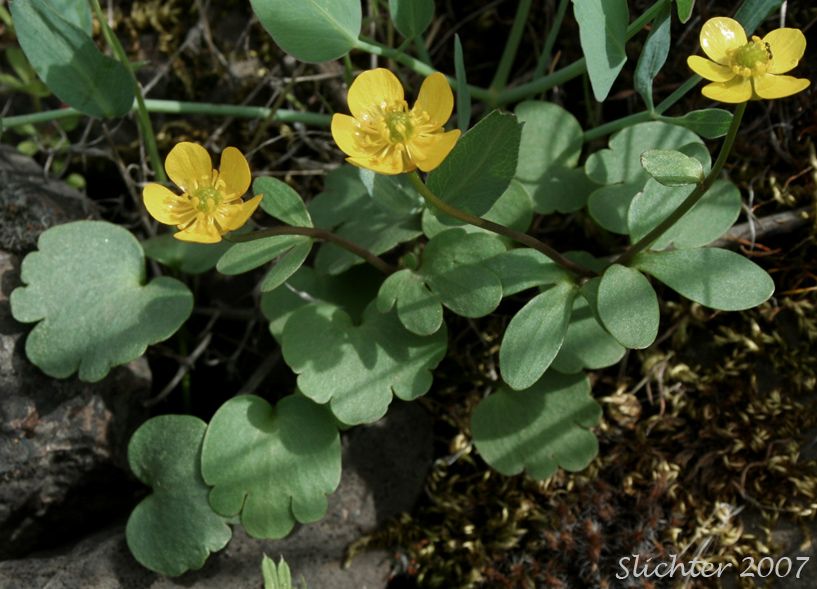

Photo at right of sagebrush buttercup, lower Deschutes River,
OR......March 22, 1997.
Characteristics:
Sagebrush Buttercup is a perennial with several
erect to prostrate stems. The stems are 5-20 cm long and may be simple to branched
above. The leaves are mainly basal. The blades are somewhat fleshy, elliptic
to obovate (sometimes nearly round) in shape with margins ranging from entire
to deeply 3-lobed at the distal end. The leaf blade tapers gradually to the
petiole which may be as long as to several times longer than the blade. One
to several stem leaves may be present.
The flowers are shiny yellow, with 5 petals 8-15
mm long. The 5 sepals are spreading, and purplish-tinged, 5-8 mm long. 40-80
stamens occupy the center of the floral disk.
Habitat:
Sagebrush Buttercup is found in ponderosa pine
woodlands and in the sagebrush desert. Variety ellipticus is primarily
montane, while variety glaberrimus is a plant of lower elevation.
Range:
Sagebrush Buttercup is a widespread species, found
from British Columbia south along the eastern edge of the Cascades and Sierra
Nevada Mts. to central California, and eastward to the Dakotas, and south to
New Mexico.
In the Columbia River Gorge it may be found east
of the Klickitat River between the elevations of 200'-2700'.
- 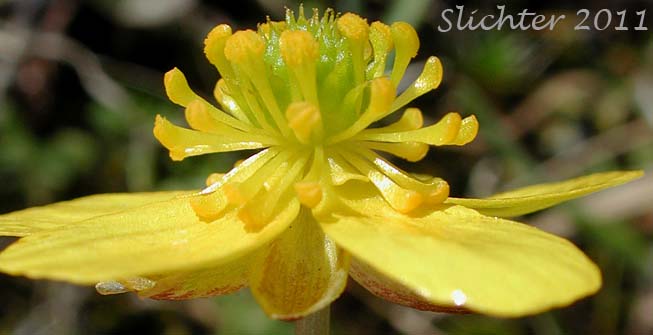 -
- 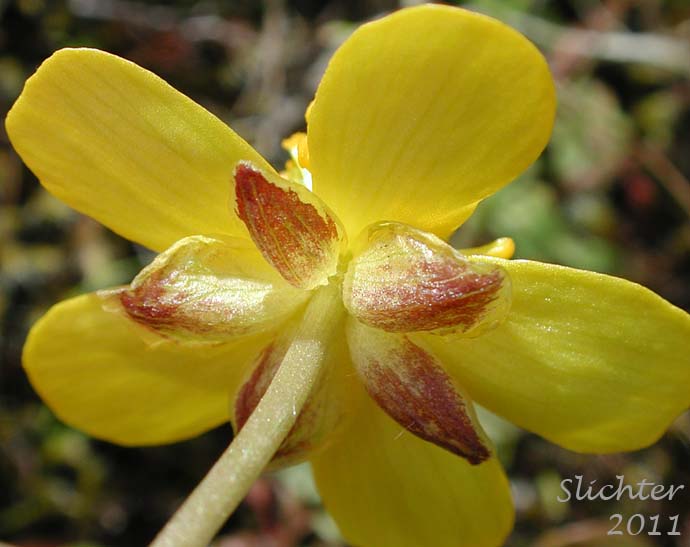
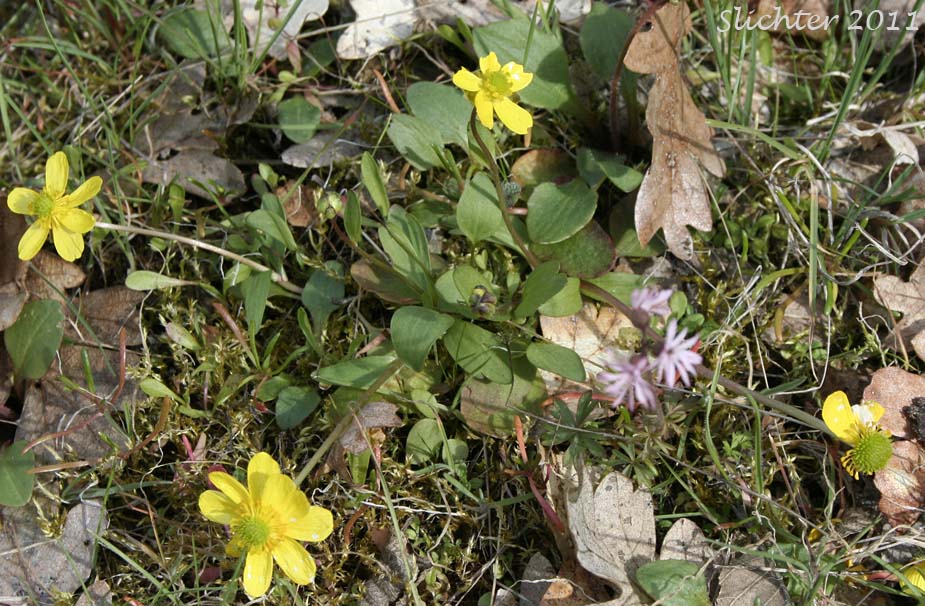 -
- 
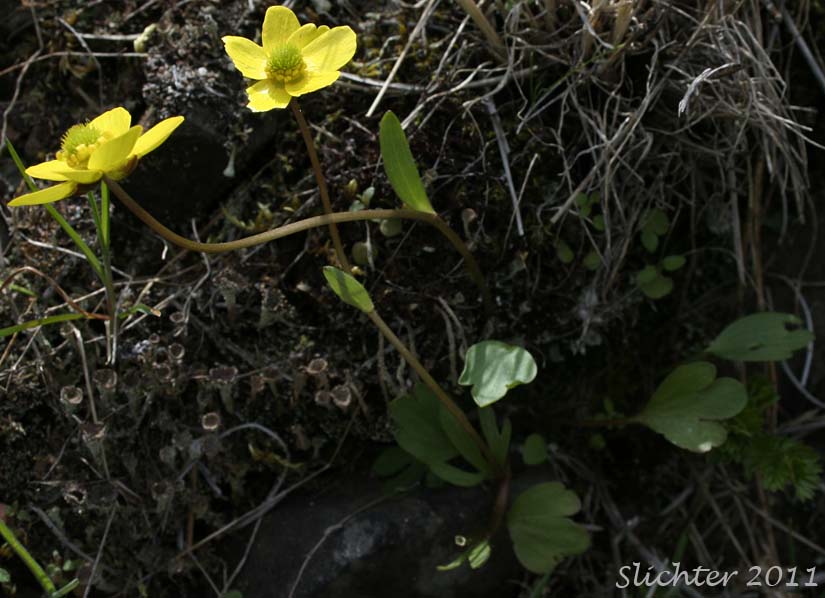 -
- 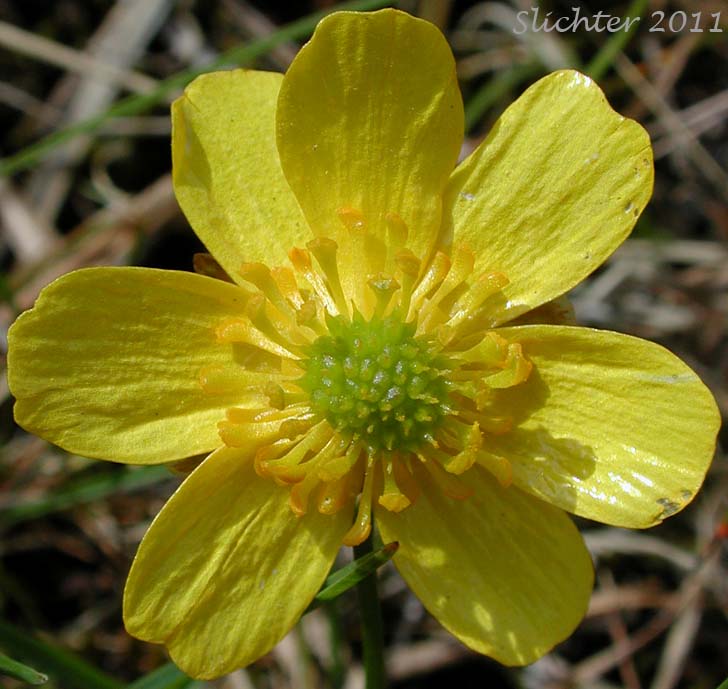
Close-up photos of sagebrush buttercup (var.
glaberrimus) as seen along the south shore of Dillacort Creek, lower Klickitat River drainage.........April 3, 2011. This variety of sagebrush buttercup typically has ovate basal leaf blades which have 3 short, rounded lobes at the blade tip and usually have leaf bracts on the stem that are three lobed with the middle lobe about the same length as the lateral lobes. The similar
elliptic buttercup (var.
ellipticus) is also found at this location and has elliptic to ovate basal leaf blades that are undivided and the leafy bracts, if 3-lobed, have the middle bract much longer than the lateral bracts.
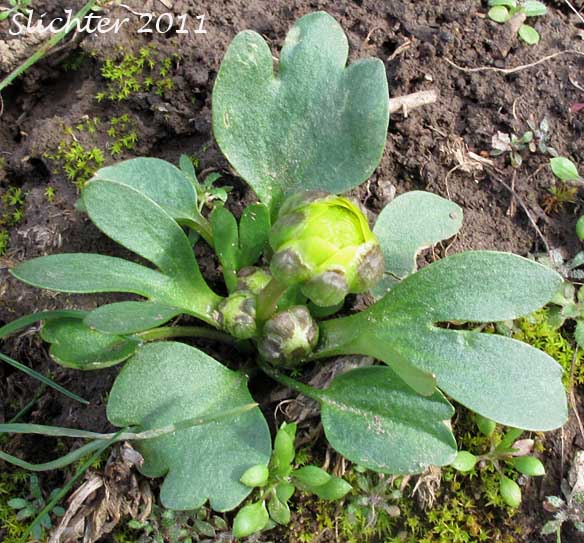 -
- 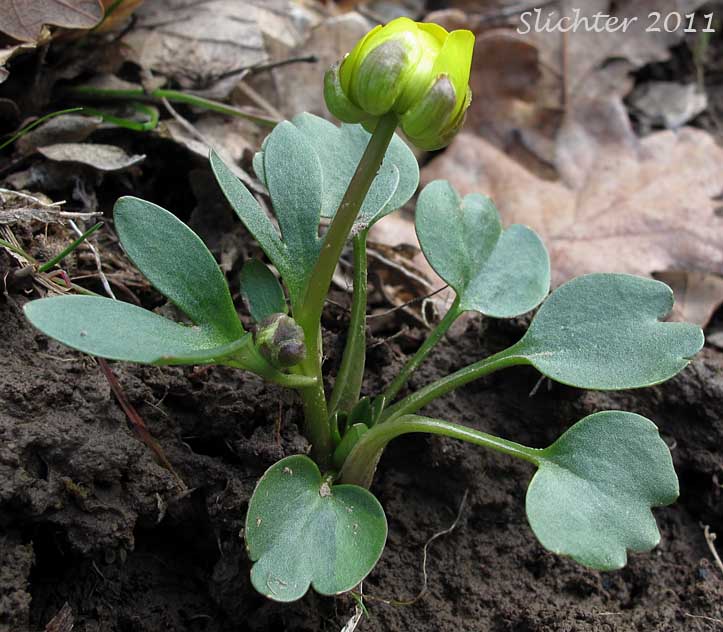 -
- 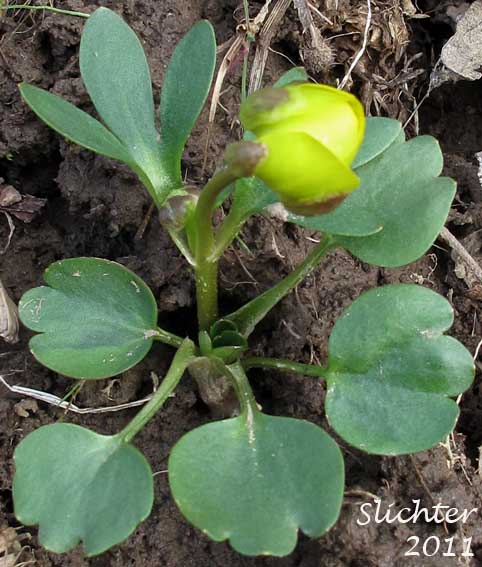
Examples of sagebrush buttercup in bud as seen along the Klickitat Trail near Klickitat Springs........February 20, 2011. Note the broad, oval-shaped basal leaves with three or four short lobes at their tips. The one or two stem leaves as seen here can be somewhat different, generally being fairly deeply cleft into 3 long segments of which the middle one tends to be the longest.
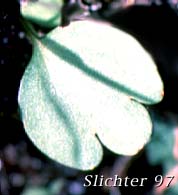
Leaf of the sagebrush buttercup, lower Deschutes
River, OR......March 22, 1997
Paul Slichter

